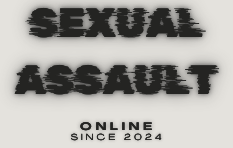Sexual Assault Database

The Sexual Assault Database is your online resource, containing regularly updated details of paedophiles, sex offenders, rapists, and child killers. We have recently added a section highlighting police sex offenders and an overview of survivor resources.
Paedophiles
The rehabilitation of individuals who commit child sexual offenses, often referred to as paedophiles, presents profound and multifaceted challenges. Unlike many other criminal behaviours, paedophilia is widely considered a deeply ingrained and persistent sexual preference or paraphilia, rather than a curable illness or a set of behaviours that can be simply “unlearned.”
One primary difficulty lies in the nature of the attraction itself. While treatment can help manage harmful behaviours and reduce risk, it typically does not eliminate the underlying sexual interest in children. This means that even after extensive intervention, the potential for re-offending remains a significant concern, requiring lifelong management and supervision.
Treatment programs often focus on cognitive behavioural therapy to address distorted thought patterns, develop coping mechanisms, and prevent relapse. However, these interventions are resource-intensive and require sustained commitment from the individual. Furthermore, assessing genuine progress and future risk is exceptionally complex, leading to high levels of public and professional scepticism about true “rehabilitation.”
Societal abhorrence of these crimes also impacts reintegration, often creating barriers to housing, employment, and social support, which can inadvertently hinder efforts to establish a stable, law-abiding life. Ultimately, the focus shifts from a traditional “cure” to rigorous risk management, ongoing monitoring, and support aimed at preventing further harm to children.
Rapists
The rehabilitation of individuals convicted of rape presents significant and complex challenges, stemming from the multifaceted nature of the crime and the psychological profiles of offenders. Unlike some crimes driven purely by circumstance, rape is fundamentally an act of power, control, and often hostility, rather than primarily sexual gratification. This underlying motivation makes behavioural change particularly arduous.
One key difficulty lies in addressing the ingrained psychological patterns, such as distorted thinking, lack of empathy, and a sense of entitlement, that frequently contribute to such offenses. Treatment programs, often involving cognitive-behavioural therapy, aim to dismantle these thought processes, teach victim empathy, and develop healthier coping mechanisms. However, offenders may resist confronting their actions or internalize rehabilitation efforts superficially, making genuine and lasting change hard to ascertain.
Moreover, assessing ongoing risk and preventing re-offending requires continuous, rigorous monitoring. The potential for recidivism, even after therapy, remains a serious concern. Societal stigma and the profound harm inflicted on victims also create significant barriers to an offender’s successful reintegration into society, which can, paradoxically, complicate rehabilitation efforts by limiting access to stable environments and support systems essential for long-term behavioural change. Ultimately, rehabilitation in these cases often means lifelong risk management and strict supervision rather than a complete “cure.”
Sex Offenders
It’s crucial to distinguish between the actual incidence of sexual offenses and the number of convicted sex offenders. Many sexual assaults go unreported, and even among those reported, only a fraction lead to a conviction. For instance, the Crime Survey for England and Wales (CSEW) estimated that 2.3% of adults (1.1 million) experienced sexual assault in the year ending March 2022, while police recorded 193,566 sexual offences in the same period, indicating a significant gap between reported crimes and actual victimisation.
The reasons why individuals commit sexual offenses are varied and often interconnected. Research suggests a combination of individual, relationship, community, and societal factors can increase the risk:
Individual Factors: These can include alcohol and drug use, delinquency, lack of empathy, aggressive behaviours, coercive sexual fantasies, hostility towards women, and a history of prior sexual victimization or perpetration. Some individuals may have underlying psychological issues or cognitive distortions that enable their behaviour, such as a sense of entitlement or a belief that their needs outweigh the victim’s.
Relationship Factors: Poor parent-child relationships, a family history of conflict and violence, emotional abuse in childhood, or association with sexually aggressive peers can all be contributing factors.
Societal Factors: Societal norms that support male superiority, sexual entitlement, or the idea of women’s inferiority can contribute to a culture where sexual violence is more tolerated. Weak laws and policies, and a general tolerance of sexual violence within communities, can also play a role.
Under-reporting and Increased Reporting: While the number of police-recorded sexual offenses has increased over the last decade (e.g., 193,566 in England and Wales in the year ending March 2022, the highest on record), this increase is attributed to factors like improved police recording practices, the addition of new types of offenses (like internet offending), and increased willingness of victims to report. This doesn’t necessarily mean the prevalence of offending has drastically increased at the same rate, but rather that more offenses are coming to light.
In the UK, there were approximately 60,000 registered sex offenders in England and Wales as of March 2019, a number that has doubled over the preceding decade due to longer registration periods and the identification of historical offenders. Online child sex offending, in particular, is noted as a high-volume crime that presents significant challenges for authorities.
If you or anyone you know have been affected by the people highlighted in this website, then please report those individuals to the Police on 101 (999 if an emergency) or visit their online resources for further details of the options for reporting a crime. You can also make a report at Crimestoppers should you wish to be completely anonymous. There is help available on our support links page.
